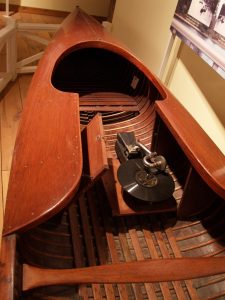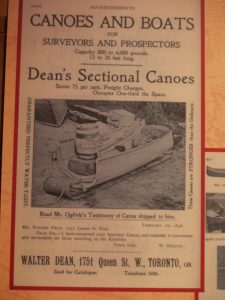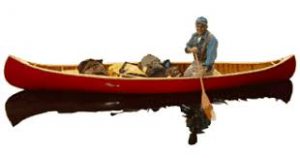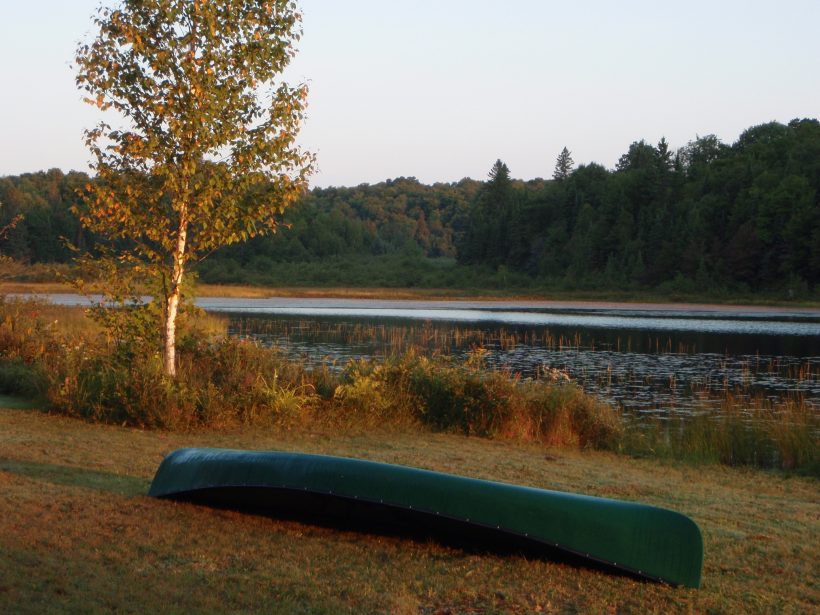ABOUT CANOES by Ralph Bice
From Wednesday, June 14, 1978
Canoeing has gone ahead by leaps and bounds the last few years. The records of vacationers going on camping trips show this, also the sight of so many new makes and models on the market. Too, the price of canoes has soared like all other things that we have to buy.
There are still a few of us around who can recall when people tried to improve on the birch bark canoe. Builders made canoes that were simply called board canoes. Some were made of cedar, some basswood. These canoes were strongly built, paddled easier than the canoes in use today, but were not as easily handled in a windstorm.
Then about 1907 someone had the idea of building a canvas covered canoe fashioned on the plan of the canoes made of birch bark. Woodsmen were a bit skeptical of these canoes but soon they were very popular. Prospectors especially liked them as they could be left for a few days when not in use and would not spring a leak. The trouble with the board canoes was that when exposed to sun the wood would shrink a bit and there would be a leak.

The first modern canoes in Canada were made by the Chestnut Canoe Company of Fredericton. There were soon other makes on the market but for real tough use in the woods most woodsmen believed in the Chestnut canoe and still do.
These canoes had a cedar frame, similar to a bark canoe, and then covered in heavy canvas. The canvas was treated with paint-like filler. Very few are now covered with canvas as most have a coat of fiberglass.
There are many other canoes of different materials that seem to be lighter and so far quite durable. So it may be that our old favourite canoes will soon be a memory.
The most notable change in canoes is the way they are handled. Seventy years ago one of the things you were expected to do was be able to paddle. When people came to the woods they wanted to learn to use a paddle. At the summer camps which were becoming very popular early in the century one of the things that the kids wanted to do was learn to paddle. Over the years I have seen some of these young people develop into first class canoeists, some who could handle a canoe as well as the old timers who had paddled all their lives and considered it a part of life.
But such a difference now. So many take canoes for granted and in spite of all the accidents few seem to realize that unless properly handled can be a very dangerous craft.

Couple of years ago there was an article on paddling in one of the outdoor magazines and the writer claimed that half an hour of instruction was all that was needed for anyone to be able to take a canoe on a camping trip. Really, I have seen some that I did not think had that much instruction.
The last few years have seen many camping parties enjoying a trip into the woods. Some appear to have been trained as their canoes are well loaded and the paddling shows practice. But many do not seem to have any idea of how to paddle. I was surprised there were not more accidents but they all returned.
In a recent issue of an outdoor magazine was a story of a canoe trip and the title mentioned on waters where Grey Owl once travelled. If Archie Belaney could see the pictures of the way the canoe was loaded and the way the paddlers were holding their paddles he would turn over in his grave.

Years ago we were taught that paddles should be long enough to come just about to your nose (‘from the butt to the tip of the blade’ – Ed) and fairly narrow blades to make paddling easier. Now we see paddles quite short and much wider. (‘Different designs for different purposes.’-Ed)
We used to be told how much weight a canoe could carry. As long as there is some of the canoe above water. So many drownings from overloaded canoes. (‘Again, a lack of training.’ –Ed) So many lives have been lost from canoes being overloaded or mismanaged. Think it would be a step in the right direction if those who write about canoes would stress that they are not to be treated like a toy and care is needed in loading and handling and there are times that the lakes are too rough for even seasoned canoers.
See The Canadian Canoe Museum for more detail.
